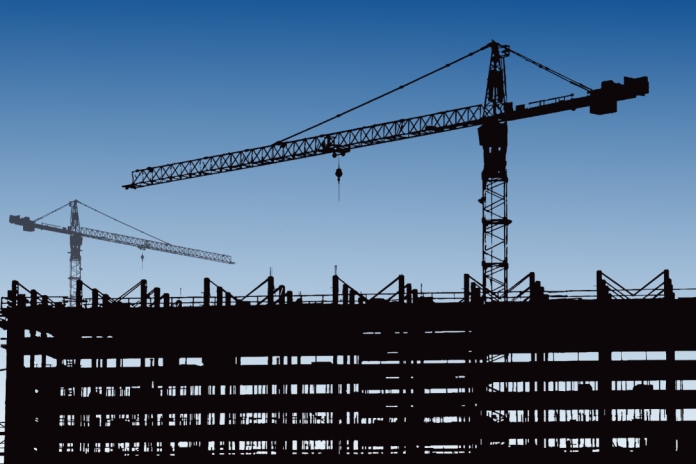
Construction will undergo a ‘W-shaped’ recession and recovery, with output expected to rise 14% in 2021 and 4.9% in 2022.
That’s according to a forecast by the Construction Products Association (CPA), which takes into account the new lockdown restrictions over winter 2020/21 before a sustained recovery from the second quarter of 2021 as vaccines are rolled out and the services-based economy can reopen again.
The CPA said that while some sectors of construction are dependent on consumer and business confidence returning, construction activity has largely been able to bounce back quicker than the overall economy.
The 14% rise expected in 2021 will follow an estimated construction of 14.3% in 2020, caused by the sharp fall in the first half of last year. But the CPA warned that output was only expected to return to pre-covid levels in 2022 and that there was a risk that once the furlough and self-employment support schemes end in April, there may be a sharp rise in unemployment that could potentially dampen the recovery.
The CPA found that private housing was one of the quickest sectors to recover in 2020, with pent-up demand for housing as well as the government’s stamp duty holiday and the end of the first phase of Help to Buy largely driving the recovery in this sector. It predicted that demand for private housing would “moderate” in 2021 after these policies end on 31 March and then subsequently pick up once again in line with the economic recovery throughout late 2021 and 2022.
The commercial sector has endured a slower recovery and is likely to be affected in 2021 and 2022 by the long-term shift to e-commerce. The CPA added that the question of whether the shift to homeworking is permanent will be crucial to determining demand for office space.
But homeworking has had a positive impact on the private housing RM&I sector, with households investing accumulated savings from lower daily expenditure back into homes. The CPA said that while this trend was dependent on job security, the extension of the government’s Green Homes Grant in April may help to boost activity.
CPA’s economics director, Noble Francis, said: “The spectre of a ‘No Deal’ Brexit that would have badly affected the UK economy and construction in the short term has been avoided but questions over the long term impact of covid-19 on the structure of the economy still remain. This continues to leave questions about the fortunes of certain construction sectors. This is most notable in the commercial sector, where there is still lots of uncertainty about the future of retail and office space. It will be crucial to observe how businesses change their operations as the vaccine is rolled out in the coming months and to what extent there is a ‘return to the office’.
“While the fortunes of some sectors have been tied to covid restrictions and associated business and consumer confidence in the wider economy, infrastructure has largely escaped such uncertainty. Projects have been able to effectively enact safe operating procedures given the sector’s large construction sites that have fewer different trades mixing than in most sectors. As such, infrastructure has been least-affected by covid restrictions and output is expected to lift the whole industry over 2021 and 2022. Main works on HS2, Europe’s largest construction project, along with offshore wind and nuclear projects are expected to be the main drivers of activity.”
Comments
Comments are closed.










I think the logic of this article misses a crucial point of the CPA forecast.
(note: a recession is defined as 2 successive quarters of economic contraction)
The forecast is based on the assumption that the whole economy will go through a W shaped recession, not that the construction sector will. This is likely is based on Q4 2020 and Q1 2021 shrinking for the whole economy (due to lockdowns, turning a V into a W!). But because construction is largely open for business, it is expected to grow.
The forecast predicts that construction will grow by 14% and 4.9% this year and next – but reasonably pointing out that end of furlough and unemployment are risks to that growth.